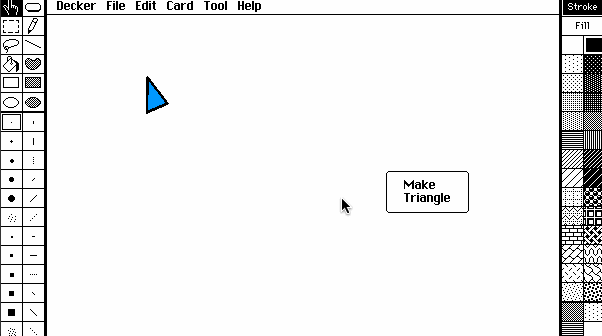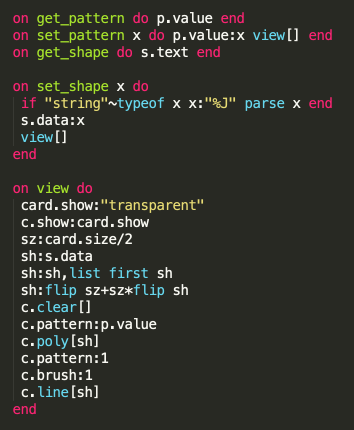In supercard and livecode, one can draw vector graphics using point or node locations. As in:
set the points of card graphic "MyRectangle" to 0,0,10,0,10,10,0,10,0,0
Which allows dynamic graphics who's shape can be a reflection of user IO or any other dynamic data set.
Decker do this???




